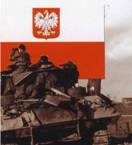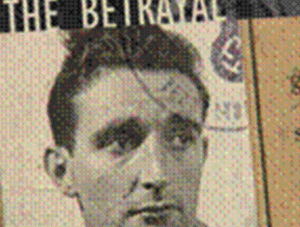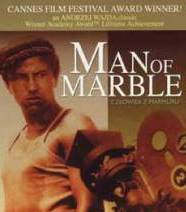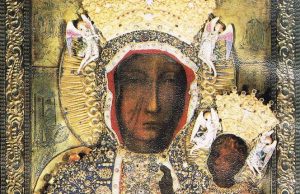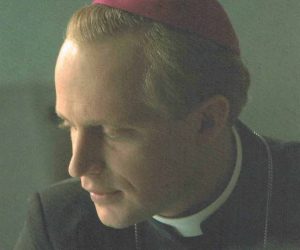This film is about the 1940 Katyn massacre directed by Andrzej Wajda.
It was nominated for the Best Foreign Language Film for the 80th Academy Awards.
In the movie the events of Katyn are related through the eyes of the women, the mother, wives and daughters of the victims executed on Stalin’s order by the NKVD in 1940.
The Polish museum is for all New Zealanders
“GLAM” Gallery, Library, Archive, Museum
Howick is a destination that offers variety including Howick beach, Stockade Hill, various Fencible sites and historical walks, All Saints Church, Uxbridge Creative Arts Centre, Te Tuhi Gallery and Howick Historical Village.
The quaint Howick village shops are a 5 minute walk from the museum and the Botany Town Centre is a 10 minute drive.
We look forward to welcoming you to “Polish films in Howick”, the Howick district and the Polish Museum.
In September 1939 Poland was overrun by the German and Russian, yet the Polish fighting spirit remained unbroken… They were displaced fighting forces, which would exact revenge for the occupation of Poland, fighting first in France, and than alongside with British in almost every campaign in the desert and Western Europe
After 7 years of fighting, many of those soldiers who returned home from the war were arrested , murdered or deported to Siberia by the Soviets who now occupied Poland.
The Free Polish forces will be remembered as the Gladiators who were willing to sacrifice everything to rescue their country.
This dramatised documentary recounts how, during the most decisive phase of Battle of Britain, a single squadron of 34 Polish fighter pilots wreaked havoc on the Luftwaffe, in the process helping to change the course of history and overturning RAF prejudices.
Based on a diary kept by the Pilots of the 303 Squadron.
Belatedly, the Poles were cleared for active service and had an immediate impact. By the time the Battle of Britain was won, they had claimed 126 enemy planes, but as the war ended, their joy turned to despair as they saw their own country handed to Stalin
Ron Jeffery was described by the Gestapo as “one of the foxiest devils in Europe” His wartime adventures as a courier, spy and even executioner have all the hallmarks of a fantastic spy thriller– but it’s all true.
This powerful film uses mix of documentary, rare archive footage and vivid recreations to lift the secrecy on this story of a courageous British born, New Zealander during his time in Europe during WW2
Ron Jeffery served as a Lance Corporal in the 6th West Kent Battalion and was captured during the Battle of France by the Wehrmacht in 1940. He was transported to prison and then to a camp in Poland. He escaped twice from two camps and finally joined up with the Polish Underground Army in Warsaw.
Using forged documents issued under false Polish and German names, Jeffery began to serve as a courier in the Polish Underground, as a part of several missions to occupied cities such as Vienna, Prague and Budapest.
After WW2, Jeffery emigrated to New Zealand where he ran a business.He compiled his memoirs in the book called “Red Runs the Vistula” published in 1985.
This is his story.
Awards:
In 1943, Home Army General Tadeusz Bor-Komorowski personally awarded Jeffery the Polish Cross of Valour.
In 1996 Jeffery was awarded the Home Army Cross
In 1995, the President of Poland Lech Walesa awarded him the Comander of the Order of Merit, one of the highest honours the Polish Government can bestow on a foreigner.
‘Battle of Warsaw – Uprising in 1944 / Bitwa o Warszawe – Powstanie w 44’ dir. Wanda Koscia (2005). History of the Warsaw Uprising, the bloodiest military action taken by the only underground army in occupied Europe.
The history of the 1944 Warsaw Uprising presented from the perspective of participants, mainly insurgents who in a lively, involved and emotional way talk about their experiences, fate of their friends and their beloved city. The story is also told from 2 other perspectives, a German soldier, who participated in the brutal suppression of the Warsaw’s quarter Wola and a British pilot and member of the British Military Mission in Moscow.
Their accounts allow their views to reconstruct a dramatic story of the uprising and the personal dramas of its participants.Produced in Poland and Great Britain. (47 min)
PLUS
‘A Forgotten Odyssey’ dir. Jagna Wright (2000). In 1940, after Russia invaded Poland, Stalin deported 1.7 million Poles to slave labour camps in Siberia and Kazakhstan. Only one third of them survived.
They tell their stories. The main destinations of these transports were Archangelsk and Kazakhstan. In some cases, the deportees were just dumped in the middle of a forest and told to build their own shelters. In other cases, they were moved to various collective farms called “kolhozs” (collectivnoye hoziaystvo).
It is estimated that slightly more than 100,000 people were later transported to Pahlevi, Persia, via the Caspian Sea. Roughly half were soldiers and half civilians. This constitutes about 7 percent of all Polish citizens who were in Russia between September 1939 and June 1941.
How many remained in Russia, how many died, how many were allowed to return to Poland after the war can be only speculated. (52 min)
In 1976, a young woman, Agnieszka is making her diploma film, looking behind the scenes at the life of Birkut, at how that heroism was created, and what became of him. She gets hold of out takes and censored footage and interviews the man’s friends, ex-wife, and the filmmaker who made him a hero.
The film chronicles the fall from grace of a fictional heroic Polish bricklayer, Mateusz Birkut, who became the symbol of an over-achieving worker in Nowa Huta, a new socialist city created in the 1950’s near Krakow. Dozens of men were lined up in the mud in a food line. There are no women to be seen. The men are housed in barracks. When presented with a single fish on a plate for lunch, they begin spontaneously to pelt the Party Official with the fish and succeed in driving him out. Birkut is one of these workers…
It is a surprise that Wajda would have been able to make such a film, revealing the use of propaganda and political corruption during the period of Stalinism.
In 1980, during the strikes in Gdansk, Wajda visited the shipyard. A worker shouted to him “Now you must make a film about our story – ‘Man of Iron.’
The workers thus directly commissioned Wajda’s second film. Its production, from beginning to end, was completed in nine months.
The story unfolds…In Warsaw in 1980, the Party sends Winkel, a weak, alcoholic TV hack, to Gdansk to dig up dirt on the shipyard strikers, particularly on Maciek Tomczyk, an articulate worker whose father was killed in the December 1970 protests. Posing as sympathetic, Winkel interviews people who know Tomczyk, including his detained wife, Agnieszka. Their narrations become flashbacks using actual news footage of 1968 and 1970 protests and of the later birth of free unions and Solidarity.
‘Our Lady of Czestochowa’, is a religious film showing the history of the monastery and sanctuary of Jasna Gora in Czestochowa, Poland. The film takes you on a tour of Poland’s greatest religious shrine, including those places which are not accessible to ordinary visitors. This film helps to understand the unique phenomenon of the Jasna Gora sanctuary
The Black Madonna Icon is a 122 x 82cm painting on a wooden panel which is shrouded by richly ornamented jeweled robes, legends and miracles.It is believed that Poland is under protection of The Black Madonna painting. A famous Catholic icon celebrated by Polish people on 15th August each year.
Story about a Pilgrimage to Czestochowa, Poland
The tradition of pilgrimages to Czestochowa, a famous Marian sanctuary (also commonly known by the name of Jasna Gora, or the Bright Mountain) is a long and diverse in Poland.
The most characteristic form of devotion is the summer walking pilgrimages to the sanctuary, when people from all over the country set off to walk in organized groups to this very special place. The experience involves hours or days of walking but there’s much more to do than just walk. The friars organize lectures on the way, focusing on various aspects of Catholic spirituality.
Perhaps the most striking feature of such an experience, it is the attitudes of people you inevitably meet on the way. From sharing drinking water or carrying your backpack for a while, to just being there to listen when you need it – but also inhabitants of local villages that pilgrimage passes through offer vast assistance, provide meals and places to stay overnight. Thus the way to the sanctuary becomes at least equally important to finally reaching it – another nice parable to the Christian way of life.
The experience is open to anyone who would like to participate in the pilgrim each August. There are some foreign guests – from the US, France, Finland, Philippines. Just bring yourself a pair of comfortable shoes – and you can start walking. Text by Kamila (Warsaw, Poland)
A 10 year Karol Wojtyla in the 1930’s in Poland, has dreams, many dreams. One by one they are shattered. First, by the loss of his mother and brother. Then by the outbreak of war and the death-fleeing exodus that ensued. And finally by the first sign of Jewish persecution.
These events will mark Karol’s long journey from worker, to poet and to teacher. A journey full of encounters that eventually leads him to become the man we all knew. A man who has marked an era. A man who has made history.
Karol Wojtyla, whose tireless fight for humanity and basic fundamental rights begins with the German invasion of his native Poland in 1939.
Appalled at the brutal treatment afforded his Jewish friends, Karol turns to his religion as a means of making a difference in the world, and with the help of several other like-minded individuals mounts a non-violent, but extremely effective, anti-Nazi resistance.
Ordained as a priest at war’s end, Karol finds himself fighting another form of Godless totalitarianism, this one from the Communists who have overtaken his country.
Ultimately, Father Karol Wojtyla’s noble mission culminates in his being elected as Pope John Paul II in 1978 and it was surely no coincidence that Poland’s liberation was now but a matter of time.
Polish Museum, 125 Elliot St, Howick phone 09 533 3530.
Entry by cash donation or internet banking
A family activity for Easter. Starts at 2pm and finishes at 4pm. 2 hours of fun filled craft with a short educational presentation.
$8 per person including adults. To make your booking please phone 533 3530
- Design your own Polish Easter Egg What is pisanki? It’s a Polish word for…?
- Create an Easter Palm from paper Taste Mazurek, a Polish Easter cake
- What is smingus-dyngus? It’s something fun!
Adults without children are welcome too !
(Please note:Children must be accompanied with an adult)
A school holiday family activity before Easter, sharing our Polish traditions
Starts at 10am till 12 noon. 2 hours of fun filled craft with a short educational presentation.
$8 per person including adults. To make your booking please phone 533 3530
- Design your own Polish Easter Egg What is pisanki? It’s a Polish word for…?
- Create an Easter Palm from paper Taste Mazurek, a Polish Easter cake
- What is smingus-dyngus? It’s something fun!
Adults without children are welcome too !
(Please note:Children must be accompanied with an adult)

